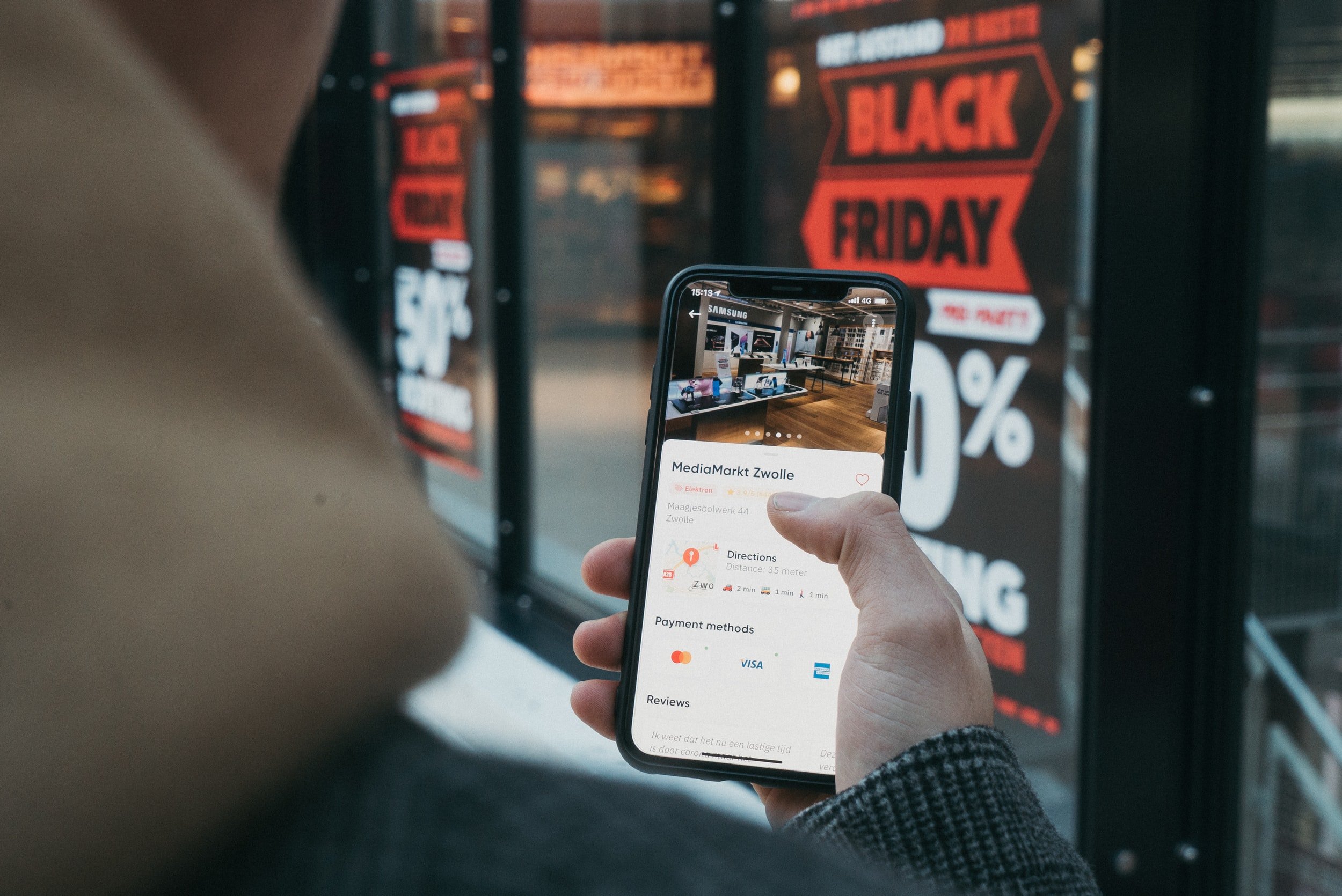Consumer Behavior Trends: What to Expect In 2022 and Beyond
A version of this post was included in my super-fun weekly email for marketers with tips, tricks, and stories.
Sign up for emails and never miss out on the fun!
Consumers' needs, preferences, and behaviors have dramatically shifted over the last few years.
While we can trace many rising consumer trends to the COVID pandemic and its after-effects, some trends can be attributed to technological advancement as we thread deeper into this new decade.
Regardless of your business model or industry, keep these 5 consumer trends in mind as you plan marketing strategies for your buyer personas—Because these shifts will affect the engagement rate, sales, and ROI of any marketing campaign launched in 2022 or 2023 (and maybe even beyond).
Trend #1: e-Commerce Boom in the Wake of COVID
Photo by @cardmapr
Just before the pandemic, we were reporting a shift in consumers going back to brick-and-mortar stores, engaging with tech as a part of in-store experiences vs. shopping exclusively online. This was especially true among an under-25 consumer (today’s largest living generation!)
Then COVID hit in 2020 and more Americans than ever before tried ordering online groceries and pretty much everything else online. We’ve read reports that the pandemic sped the push to e-commerce by 5+ years.
What’s interesting here is that even a few years later, we’re still seeing the after-effects. In fact, a 2022 study indicates that 36% more Americans purchased household goods online this year than they did last year. Another report from Jungle Scout says that 46% of consumers made their 2021 holiday season shopping exclusively online—the largest number, well, ever.
These stats all point to one direction: that shopping continues to move online and that more than ever before, people are perceiving it as an experience, not just a point of purchase.
Lower prices and affordable shipping are some of the biggest reasons customers cited for now preferring to shop online rather than in-store. However, over 83% of shoppers surveyed cite convenience as the key reason they shop online.
What does this mean for businesses? For one, brick-and-mortar stores must establish an online presence by launching an e-commerce store or partnering with third-party outlets.
Secondly, brands need to invest more into digital marketing to secure their customer share online and acquire new buyers.
Thirdly, since convenience is paramount to online shoppers, businesses need to invest more people and cash resources into optimizing and guaranteeing a frictionless online shopping experience for their customers at all times.
Need a hand with that? Our UX researchers can help conduct expert heuristic reviews, CRO audits, and user testing designed to increase engagement and conversions. Set up a time to talk if you’re interested!)
Trend #2: Omnichannel Shopping & Non-linear Buyer Journeys
Photo by Josh Withers
Omnichannel shopping has been a buzzword for the last decade, but now more than ever as your consumers become more digitally connected and technically savvy, plotting their journey is a crucial step in understanding and optimizing their experience—before, during, and after the time when the actual purchase takes place. .
Today it’s not uncommon for shoppers to experience dozens of touches with a business before buying—across different devices and channels.
While customers previously followed a linear path to purchase, today they bounce between inspiration, learning, planning, and buying like a pinball. .
They hear about your brand through an influencer Instagram ad, click to your website, browse through inventory, search for similar products from your competitors or on Amazon, jump to YouTube for third-party reviews, get distracted by a "new video" notification from their favorite TikToker, run into your TikTok ad, and finally get that spark of inspiration to move to buy.
Not quite the customer journey most businesses envisage. Reduce your cart abandonment rate by optimizing your digital marketing campaign to track and reach your customers on different platforms as they make their way through their erratic customer journey.
I just filmed a new LinkedIn Learning class last week on Advanced Journey Mapping techniques that cover cases like this—get notified when it comes out
Trend #3: The Rise of Digital Seniors
Photo by Georg Arthur
The pandemic necessitated almost everyone (seniors included) to turn to the Internet—their activities ranged from holding Zoom meetings and even family get-togethers, consulting a doctor, keeping fit, and grocery shopping. And while the heat of the pandemic may be fading away, seniors aren't leaving their newfound digital life behind any time soon.
Take my mother, for example.
During the pandemic, I visited for dinner, and my mother sat on the couch. We were chatting, and she was distracted by her phone. She was clearly scanning some sort of feed, moving her finger up with habitual precision.
"Are you on Facebook," I asked, bewildered? "Oh God, no," she replied, "That's not secure at all, fake news and data breaches... I'm on the Weight Watchers app." I stared, perplexed but intrigued.
"It's my online tribe," she shrugged in explanation, and kept scrolling.
So...I want to pause right there. My mother, someone who I've actually heard mutter the sentence, "I'll just pull up The Google on the FoxFire," used the term "online tribe" to describe a community feed she follows. Woah!
Today, online businesses who don’t target seniors may be leaving out a huge audience—and a huge pile of cash on the table, to boot.
So work on developing easy-to-use systems and optimize the shopping experience for the seniors in your market segment. If not, they will move to your competitors.
Trend #4: Power to the Influencers
Photo by Marcos Luiz
When a worldwide lockdown was in effect, and we were all glued to our phones, iPads, and other digital devices to shop, we turned to online influencers. Influencers gave us that human connection lacking in a traditional customer journey, and we came to trust them and buy based on their recommendations.
Even as some people are back to shopping in-store now, we are noticing that people still tend to refer to recommendations from their favorite influencers to pick items off the shelves.
Going by this trend, one thing is clear: influencers will continue to play a significant role in the customer journey for years to come.
What does that mean for businesses? They need to seek out influencers to push their products and services.
The fantastic thing is that you no longer have to pay celebrity influencers with millions of followers a fortune to influence your brand. Instead, micro influencers (with hundreds of thousands of followers), and even nano influencers (with just a thousand followers), can now push an appreciable amount of sales your way.
Trend #5: Gen Z Takeover
Photo by Screen Post
51% of the world's population is under the age of 25. Over half! More than that, 98 percent of teens worldwide own a smartphone (slightly lower in the US, around 96 percent). What's more, 85 percent find out about new products through social media.
These statistics make it evident that Gen Z is online and set to become the biggest and most important segment of everyone's market. So whether or not you are marketing directly to Gen Z, they are without a doubt changing the game.
Seeing the huge impact that Generation Z has on your business today, you have to develop new, fresh marketing strategies to connect with, engage, build relationships, and convert them to paying customers.
You can find all the best strategies and techniques you need to market to Gen Zers the right way in the InstaBrain book.
Shameless plug: go get it here 😉.
Conclusion
Market dynamics never stand still, and neither should you. We have listed the biggest changes tin play. Consider these as you strategize about how to market to your buyer personas.
Use this blog post as a guide to plan new campaigns, or optimize existing ones, to increase engagement and ROI from your marketing efforts over the next few years.
Want more of this marketing goodness?
***
If you liked this article, you might like my blog post on 4 Questions to Help B2B Marketers Understand the Mindset of A Buyer’s Journey
Sarah Weise is the CEO of award-winning marketing research agency Bixa and the bestselling author of InstaBrain: The New Rules for Marketing to Generation Z. For 15 years, Sarah has been a guide to hundreds of leading brands, including Google, IBM, Capital One, Mikimoto, PBS, and U.S. Army, to name a few. Sarah helps brands achieve a laser focus on their customers and build experiences that are downright addictive. She lectures at Georgetown University’s McDonough School of Business and speaks at conferences and corporate events worldwide.





